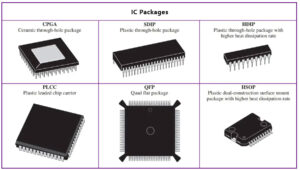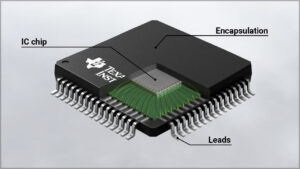Introduction
In the realm of high-performance computing and artificial intelligence, Graphics Processing Units (GPUs) have emerged as indispensable tools, driving advancements in data processing, machine learning, and scientific research. Among the prominent players in the GPU market, NVIDIA and AMD stand out as leading contenders, each with its own strengths and unique offerings.
Understanding the nuances between these two giants and their respective technologies is crucial for developers and businesses aiming to harness the full potential of GPU computing.
Follow us on Linkedin for everything around Semiconductors & AI
1. Performance Dynamics: NVIDIA Vs. AMD
A fundamental distinction between NVIDIA (NVDA) and AMD GPUs lies in their peak floating-point performance.
NVIDIA GPUs often lead the pack in this aspect, making them ideal for intensive AI workloads that heavily rely on floating-point calculations. On the other hand, AMD GPUs excel in integer arithmetic operations, which are more prevalent in simpler computational tasks.
Floating-point operations are essential for handling decimal numbers and performing intricate mathematical computations with high precision. NVIDIA’s CUDA architecture, coupled with specialized tensor cores in some of their latest GPUs, accelerates these floating-point calculations, making them ideal for AI workloads, including deep learning training and inference tasks.
On the other hand, AMD GPUs tend to excel in integer arithmetic operations. While floating-point operations are crucial for many advanced computational tasks, integer arithmetic operations are more prevalent in simpler computational tasks, such as gaming physics, video encoding, and certain types of data processing. AMD’s GPUs leverage their architecture to optimize integer arithmetic performance, offering competitive performance in scenarios where these operations are dominant.
Read More: 5 Videos Delving into the Dark Side of Semiconductor Dreams – techovedas
2. CUDA vs. HIP: Bridging the Gap
For developers seeking to leverage AMD GPUs, an alternative to NVIDIA’s CUDA framework is HIP, aided by the tool hipify-perl.
CUDA (Compute Unified Device Architecture) is NVIDIA’s proprietary parallel computing platform and programming model, widely adopted for GPU-accelerated computing tasks. It provides a rich set of libraries, tools, and APIs that enable developers to efficiently harness the computational power of NVIDIA GPUs. However, CUDA is specific to NVIDIA hardware, which poses a challenge for developers working with AMD GPUs who seek compatibility and portability across different platforms.
In response to this challenge, AMD developed HIP (Heterogeneous-compute Interface for Portability), an open-source project aimed at facilitating porting of CUDA code to AMD GPUs. HIP provides a set of tools and APIs that mirror CUDA’s functionality, allowing developers to write code in CUDA syntax and then convert it to HIP-compatible code using tools like hipify-perl.
Here’s How the Process Typically Works:
Writing Code in CUDA: Developers start by writing their GPU-accelerated code using CUDA syntax and libraries. This code is optimized for NVIDIA GPUs and utilizes CUDA-specific features.
Conversion with hipify-perl: Once the CUDA code is written, developers use hipify-perl, a tool provided by AMD, to automatically convert the CUDA code to HIP-compatible code. This tool translates CUDA-specific syntax and function calls into their equivalent HIP counterparts.
Customization and Optimization: While hipify-perl streamlines the conversion process, it doesn’t guarantee identical performance between CUDA and HIP. Developers often need to manually optimize and customize the converted code to fully exploit the performance advantages of AMD GPUs. This may involve tweaking memory access patterns, exploiting AMD-specific features, or optimizing kernel launch configurations.
Testing and Validation: After customization, developers must thoroughly test and validate the converted code to ensure it behaves correctly and achieves the desired performance on AMD GPUs. This iterative process may involve profiling, debugging, and fine-tuning the code to address any performance bottlenecks or compatibility issues.
It’s important to note that while HIP enables cross-compatibility between NVIDIA CUDA and AMD GPUs, it doesn’t eliminate the need for developer intervention. Converting CUDA code to HIP is just the first step, and significant effort may be required to optimize the converted code for optimal performance on AMD hardware.
Read more: Top 10 Semiconductor Companies in India and Why They’re Poised for Growth – techovedas
3. Customization and Optimization
According to experts, approximately 50% of the work involved in porting code to AMD GPUs is handled by the converter, while the remaining 50% requires developer intervention for optimizations and customizations.
This additional customization effort introduces a significant overhead, potentially doubling the cost associated with AMD GPUs compared to their NVIDIA counterparts.
Read More: Chinese Lithography Giant SMEE to File IPO with 28nm Capability
4. Cost Considerations
Despite the higher upfront cost of NVIDIA GPUs, the overall cost-effectiveness often favors NVIDIA due to the one-time investment nature of their platform.
In contrast, the recurring effort required for code conversion and customization with AMD GPUs can substantially inflate the total cost of ownership, making NVIDIA a more financially prudent choice in many scenarios.
Read More: 5 High Growth Stocks From the World of Semiconductors – techovedas
5. Use Cases and Availability
The decision to opt for AMD GPUs with conversion tools like HIP typically arises when NVIDIA GPUs are unavailable or when specific budget constraints necessitate exploring alternatives.
While AMD GPUs may offer competitive performance in gaming applications, they tend to lag behind NVIDIA in AI and general-purpose computing tasks.
Read More: Twice the Speed, Half the Power of Nvidia’s H100: Intel Releases AI Chip Gaudi 3 – techovedas
6. Competitive Landscape and Future Prospects
Internally, NVIDIA closely monitors emerging competitors in the GPU space, including startups like Graphcore, SambaNova Systems, Esperanto Technologies, and Groq.
Should any of these contenders demonstrate significant technological advancements, NVIDIA remains open to acquisition opportunities, such as leveraging its financial strength to secure strategic assets and maintain its competitive edge.
Read More: From Bulky Boxes to Brainboxes: The 140-Year Evolution of the PCB – techovedas
Conclusion: Navigating the GPU Landscape
In summary, the choice between NVIDIA and AMD GPUs hinges on a multitude of factors, including performance requirements, cost considerations, and availability.
While NVIDIA leads in peak floating-point performance and enjoys broad developer support through CUDA, AMD provides a viable alternative with its ROCm platform and conversion tools like HIP.
Ultimately, developers and businesses must carefully evaluate their specific needs and weigh the trade-offs between performance, cost, and such as convenience to make informed decisions in harnessing the power of GPUs for their applications.




